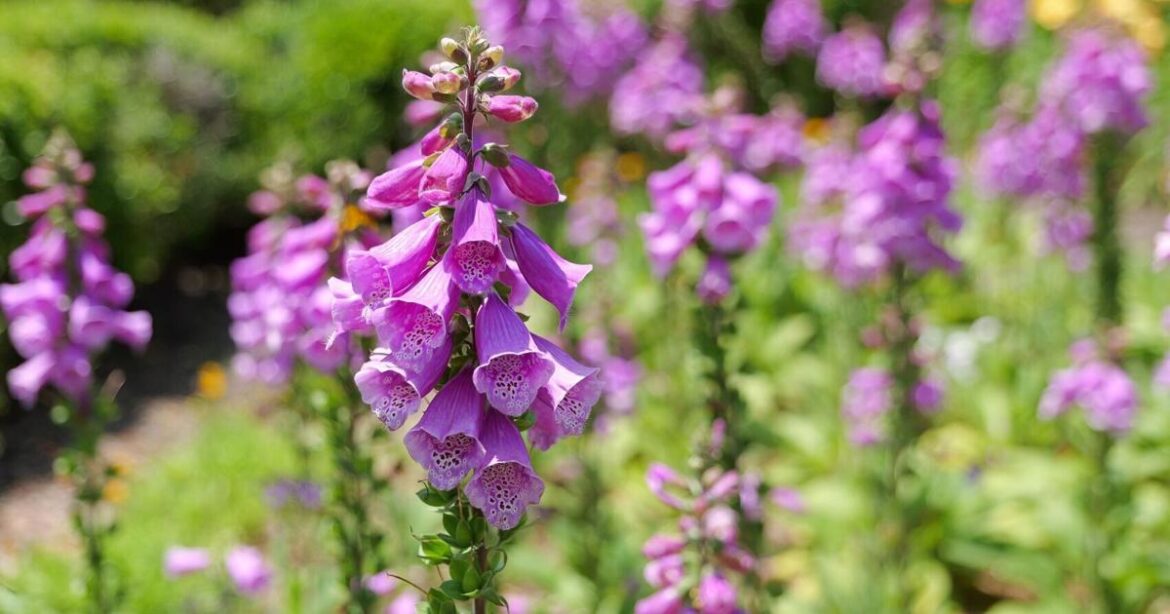To keep your flowerbeds colorful and attractive over the winter and into the spring, now is the time to replace warm-season bedding plants that bloomed over the summer. If they still look good, you can wait until mid-December to get this done (if freezes don’t get them first).
Replace them with any of the rich variety of cool-season bedding plants available now in area nurseries. These plants will thrive during winter’s cold and keep your beds full of colorful flowers.
Cool-season bedding plants are those that are planted from October to March. They like mild to cool temperatures and tolerate freezing temperatures down to the low 20s or even teens. Among the many cool-season bedding plants we can put in now, however, there are differences in how they are planted and when they bloom.
I have begun to divide cool-season bedding plants into four groups: bloom all season; take the winter off; plant in fall and bloom in spring group; and plant early and young.
Purchasing pansies for immediate color in the landscape. Planted now, they will provide flowers for five months.
STAFF PHOTO BY MICHAEL JOHNSON
Bloom-all-season flowers
These are among the most useful and popular of the cool-season bedding plants. They are purchased in bloom and best planted in the fall. They continue to bloom all through our mild winter, with a big crescendo of flowers in March and April.
Purchasing plants in bloom is nice because it allows you to select the precise colors you are looking for. Blooming transplants also provide immediate color to the landscape. Planted now, those in this group will provide flowers in your gardens for five months. Now that’s what I call a big bang for your gardening buck.
In this category, you will find pansy, dianthus, alyssum, dusty miller (attractive foliage), viola, calendula and stock. I think that diascia, nemesia, lobelia and toadflax will also fall into this category, but flowering may be reduced in midwinter.
Snapdragons will spend the winter growing and developing strong root systems, with most of their blooms early March through May.
Brett Duke, NOLA.com | The Times-Picayune
Those that take the winter off
You can purchase blooming transplants in this group now. They will provide color in flowerbeds in the fall but will typically stop blooming as the short days and long nights of mid-winter approach.
During the winter, they grow large, strong root systems and robust plants. As the longer, warmer days of early March arrive, these large, well-established plants begin to grow vigorously and burst into bloom — often blooming well into May.
Although you may plant these plants in spring, best spring displays are from a fall planting.
Two popular bedding plants in this category are petunias and snapdragons. Nicotiana also fits in here. Nicotianas should be covered if temperatures below the mid-20s are predicted.
Sweet peas are best planted from seeds in the fall for blooms in the spring.
Pixabay photo
Plant in fall, bloom in spring
A few of our nicest cool-season bedding plants are best planted using seeds in the fall but don’t bloom until spring. You cannot wait until spring to plant seeds of these plants and expect a good display of flowers. They need the winter growing season to produce strong, robust plants that will produce an outstanding display of blooms in spring.
Most of these plants resent transplanting and are best directly seeded right where they are to grow. Plant the seeds in well-prepared soil at the depth recommended on the package (smaller seeds are simply scattered over the area and pressed in).
Once the seeds come up, be sure to thin the seedlings to the appropriate spacing. If you allow the plants to grow too crowded, you will be disappointed with the results.
The foliage of these plants is cold hardy and will not be bothered by winter freezes. Growth will be relatively slow through the winter and then pick up as the weather warms in February. By March, these plants will come into bloom and bloom until late April or early May.
This category includes all the annual poppies, such as Shirley poppy (Papaver rhoeas), Iceland poppy (P. nudicaule), California poppy (Eschscholzia californica), peony-flowered poppy (P. paeoniflorum) and the bread seed poppy (P. somniferum).
Sweet peas also fall in this category. Plant seeds now for this beautiful and outstandingly fragrant spring flowering vine.
Also in this group are bachelor’s buttons (or corn flower), annual phlox and larkspur. All these plants will commonly self-seed, and you may see new seedlings show up each fall in areas where they grew the year before.
The delicate blooms of Camelot series foxgloves appear March through May after transplants are planted in fall — February at the latest.
STAFF PHOTO BY BRETT DUKE
Plant them early and young
This group primarily includes hollyhock, delphinium, columbine and foxglove. Swan columbine and Camelot foxglove, both Louisiana Super Plants, are best varieties for our area.
The biggest mistake in planting these is waiting until spring and planting small plants already in bloom. You will usually be disappointed with the results. You can buy larger blooming plants growing in gallon size containers, but they are more expensive.
The trick is to plant young transplants not yet in bloom in the fall or by February at the latest. This allows the plants to grow into large, well-established plants before they bloom. Handled this way, all four of these plants will bloom as early as March and as late as May and produce the showy flowers you expect.
Hollyhocks, delphiniums and foxgloves add drama and height to flowerbeds. Columbines produce exquisitely beautiful flowers.
Fall in line
What every category has in common is that fall planting is important for best results. When your gardens are the envy of the neighborhood this winter and produce a traffic-stopping spring spectacle, you’ll be glad you did.


Comments are closed.